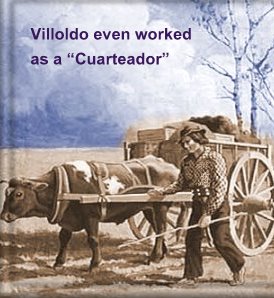1937, February 22 – ROBERTO RAY RECORDS “SOLLOZOS”
 “A man deceived me” she says humiliated and destroyed…the lyrics of “Sollozos” tell of the pity a man feels for a girl he finds sobbing…he notices a locket round her neck with a man’s picture in it; tenderly he counsels her, “forget your past, if he shed no tears for you, shed no tears for him”…originally composed by Osvaldo Fresedo in 1922 with lyrics by his brother Emilio Fresedo, the word “Sollozos” means sobs,; it was a major hit for the mythical combination of Osvaldo Fresedo with singer Roberto Ray…it was first recorded by Rosita Quiroga in 1922 without making much of an impact…through the man’s empathy and concern, she is strengthened; she remembers her mother, she recovers her pride…he remembers nostalgically her pained lips and the smile she gave him…Emilio Fresedo’s lyrics were no small reason for the attainment of his brother’s legendary status; some of their hits together include, “El Once”, “Canto de Amor”, “Siempre Es Carnaval”
“A man deceived me” she says humiliated and destroyed…the lyrics of “Sollozos” tell of the pity a man feels for a girl he finds sobbing…he notices a locket round her neck with a man’s picture in it; tenderly he counsels her, “forget your past, if he shed no tears for you, shed no tears for him”…originally composed by Osvaldo Fresedo in 1922 with lyrics by his brother Emilio Fresedo, the word “Sollozos” means sobs,; it was a major hit for the mythical combination of Osvaldo Fresedo with singer Roberto Ray…it was first recorded by Rosita Quiroga in 1922 without making much of an impact…through the man’s empathy and concern, she is strengthened; she remembers her mother, she recovers her pride…he remembers nostalgically her pained lips and the smile she gave him…Emilio Fresedo’s lyrics were no small reason for the attainment of his brother’s legendary status; some of their hits together include, “El Once”, “Canto de Amor”, “Siempre Es Carnaval”
***
Unlike the overwhelming majority of tango greats, the Fresedo brothers came from a rich aristocratic family and there were heated battles with their father who had envisioned much more austere careers for his sons…in fact Osvaldo Fresedo’s music appealed to that part of the upper class that dared to admit that they loved tango…he was so popular that he kept several orchestras going simultaneously and Osvaldo would go from club to club to appear with each group for a few minutes before making his presentation at another venue…Roberto Ray with his refined, sensitive style was perfect for the Osvaldo Fresedo Orchestra and in fact they  would work together for 30 years…Roberto Ray was born on December 21, 1912 (Sagittarius) in the neighborhood of San Cristobal, Buenos Aires…he started with Osvaldo Fresedo in 1931 and together they would create tangos that have never been out of popularity; hits like the legendary “Vida Mia”, “Niebla de Riachuelo” and “Recuerdo de Bohemia”
would work together for 30 years…Roberto Ray was born on December 21, 1912 (Sagittarius) in the neighborhood of San Cristobal, Buenos Aires…he started with Osvaldo Fresedo in 1931 and together they would create tangos that have never been out of popularity; hits like the legendary “Vida Mia”, “Niebla de Riachuelo” and “Recuerdo de Bohemia”
________________
- CLICK HERE– http://www.youtube.com/watch?v=XxDEiWLvAVA to hear the Osvaldo Fresedo Orchestra play “Sollozos”















